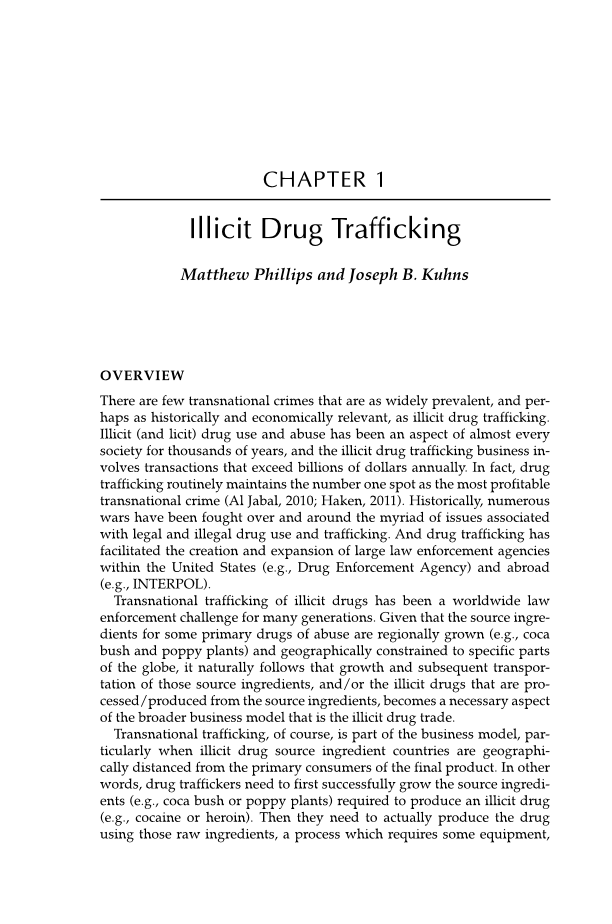CHAPTER 1
Illicit Drug Trafficking
Matthew Phillips and Joseph B. Kuhns
OVERVIEW
There are few transnational crimes that are as widely prevalent, and per-
haps as historically and economically relevant, as illicit drug trafficking.
Illicit (and licit) drug use and abuse has been an aspect of almost every
society for thousands of years, and the illicit drug trafficking business in-
volves transactions that exceed billions of dollars annually. In fact, drug
trafficking routinely maintains the number one spot as the most profitable
transnational crime (Al Jabal, 2010; Haken, 2011). Historically, numerous
wars have been fought over and around the myriad of issues associated
with legal and illegal drug use and trafficking. And drug trafficking has
facilitated the creation and expansion of large law enforcement agencies
within the United States (e.g., Drug Enforcement Agency) and abroad
(e.g., INTERPOL).
Transnational trafficking of illicit drugs has been a worldwide law
enforcement challenge for many generations. Given that the source ingre-
dients for some primary drugs of abuse are regionally grown (e.g., coca
bush and poppy plants) and geographically constrained to specific parts
of the globe, it naturally follows that growth and subsequent transpor-
tation of those source ingredients, and/or the illicit drugs that are pro-
cessed/produced from the source ingredients, becomes a necessary aspect
of the broader business model that is the illicit drug trade.
Transnational trafficking, of course, is part of the business model, par-
ticularly when illicit drug source ingredient countries are geographi-
cally distanced from the primary consumers of the final product. In other
words, drug traffickers need to first successfully grow the source ingredi-
ents (e.g., coca bush or poppy plants) required to produce an illicit drug
(e.g., cocaine or heroin). Then they need to actually produce the drug
using those raw ingredients, a process which requires some equipment,


























































































































































































































































































































































































































































































































































































































































































































































